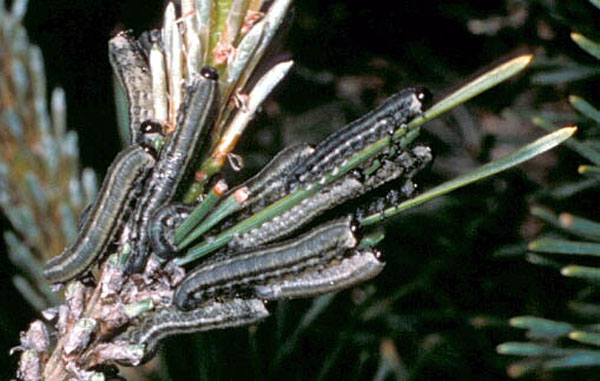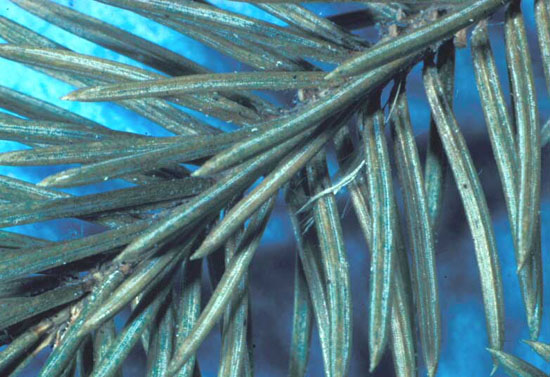Issue 2, May 8, 2017
Pest Watch
Viburnum leaf beetle is controlled by pruning and destroying twigs containing eggs in the fall and winter to reduce larval numbers the following spring. Larvae are controlled by Acephate (Orthene), carbaryl (Sevin), cyfluthrin (Tempo), imidacloprid (Merit), lambda-cyhalothrin (Scimitar), spinosad (Conserve), and malathion. A spray application to young larvae in the spring is most effective in preventing damage. A second spray may be needed later in the growing season to control heavy adult feeding.
European pine sawfly larvae are present throughout the state feeding on Scotch, mugo, and other two and three needle pines. The larvae grow to about one inch long with dark and lighter green stripes. They have large black heads. Sawfly larvae can be distinguished from caterpillars by having six or more pairs of prolegs. Because the larvae feed in groups, hand-picking is an effective control. Spraying with acephate (Orthene), acetamiprid (TriStar), azadirachtin (Azatin, Bioneem, Ornazin), carbaryl (Sevin), indoxicarb (Provaunt), or spinosad (Conserve) is also effective.

European pine sawfly larvae.
Spruce spidermite, arborvitae mite, juniper mite, and pine mite should still be feeding in central and northern Illinois. Spider mites are controlled with miticide sprays when the mites are active, make sure they are present by knocking the grayish to green mites from branches onto white paper before application. Do not treat trees with high numbers of red or whitish predatory mites. Effective miticides include acequinocyl (Shuttle), bifenthrin (Onyx, Talstar), fenazaquin (Magus), insecticidal soap, spiromesifen (Forbid), and summer oil.

Spruce spidermite damage.
(Phil Nixon)